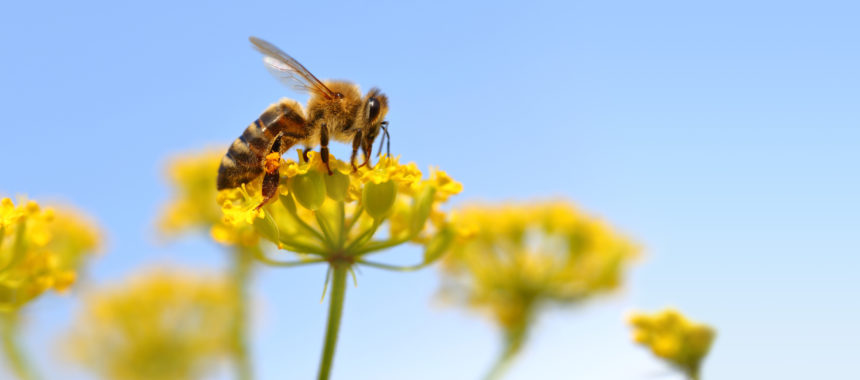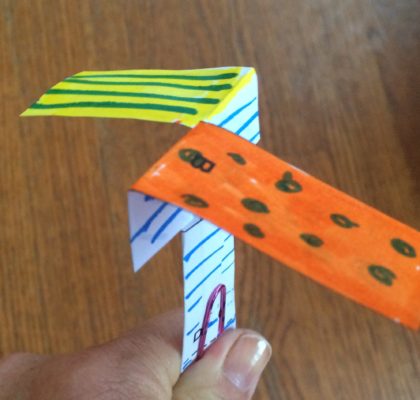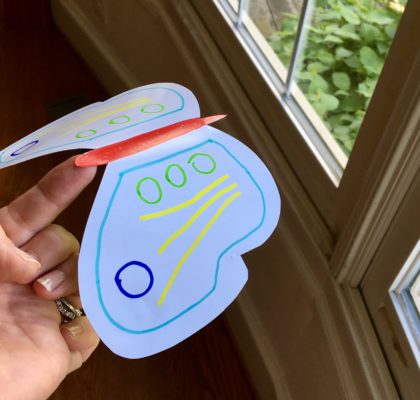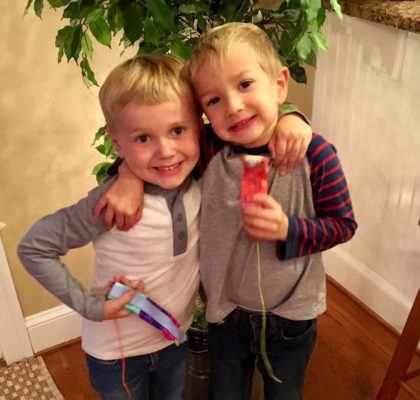
Honey Bees & Pollination Pretend Play
In this hands-on science activity, young children explore bees and pollination.
Honeybees make honey during the warm months and store it in their hive to eat during the cold winter months. They store it in little pockets in their beehive called “honeycomb.” Each honeycomb pocket has six sides. The honeybees build this honeycomb out of wax that they make themselves. Honeybees also raise their young in empty honeycomb pockets. We humans use beeswax for lots of things too, like making candles. A honeybee must eat 8 pounds of honey to make a single pound of wax!
Bees must gather nectar from flowers to make their honey. They must visit over 4,000 flowers to make just one tablespoon of honey! Bees also gather pollen from flowers, which they make into bee pollen (which is another source of food in winter). Unlike the pollen that floats through the air, bee pollen is very healthy to eat, even for humans. Bees also carry pollen from flower to flower as they buzz about, which helps flowers to produce seeds. This in turn helps new plants to grow. This is called "pollination."
To get all of this work done, honeybees live in large, organized groups called colonies. Colonies can have as many as 100,000 bees, though there is usually only one queen bee, which is the only bee that can have babies. The hive usually has just one opening for all of these busy bees to fly in and out of.
Other fascinating bee facts:
- Bees are the only insects that make food that we humans eat.
- A bee's wings move really fast, making more than 11,000 beats per minute. This is what makes the buzzing sound.
- Bees communicate by performing a dance called a “waggle dance” in which they fly in a figure 8 pattern repeatedly. The angle of the figure 8 indicates the direction of the food source, the length indicates the distance to the food source and the intensity of the dance indicates quality and quantity of the food source.
- Not all bees have stingers -- only those whose job it is to protect the hive. Bees don't want to sting you, but they might if they feel like they are in danger. Don't ever swat at bees or make them angry. It is best to enjoy the beauty and hard work of bees from a safe distance! Beekeepers and other people who harvest honey wear special clothes and take other important steps to keep themselves safe.
Safety Notes
None
Materials
- Large magnetic or metal surface - 1 total
- Magnet wands - class set - 1 total
- Bee pictures - class set - 1 total
- Button magnets - class set - 1 total
- Beehive picture - 1 total
- Flowers - class set - 5+ total
- Play tunnel (optional)
- Yellow pom poms - class set (optional)
- Bucket (optional)
Instructions
Prep: Glue button magnets to the backs of the bee pictures. Tape the beehive picture and flowers to the large magnetic or metal surface.
Procedure: Children will use magnet wands to fly the worker bees from flower to flower and back to the hive. They can have their bees do the "waggle dance" for other bees to follow!
Extension: have the children gather yellow pom poms from around the room, then crawl through the tunnel to pretend they are going into a hive. They can deposit the "pollen" into a bucket in the hive, then crawl back out through the tunnel to gather more.










